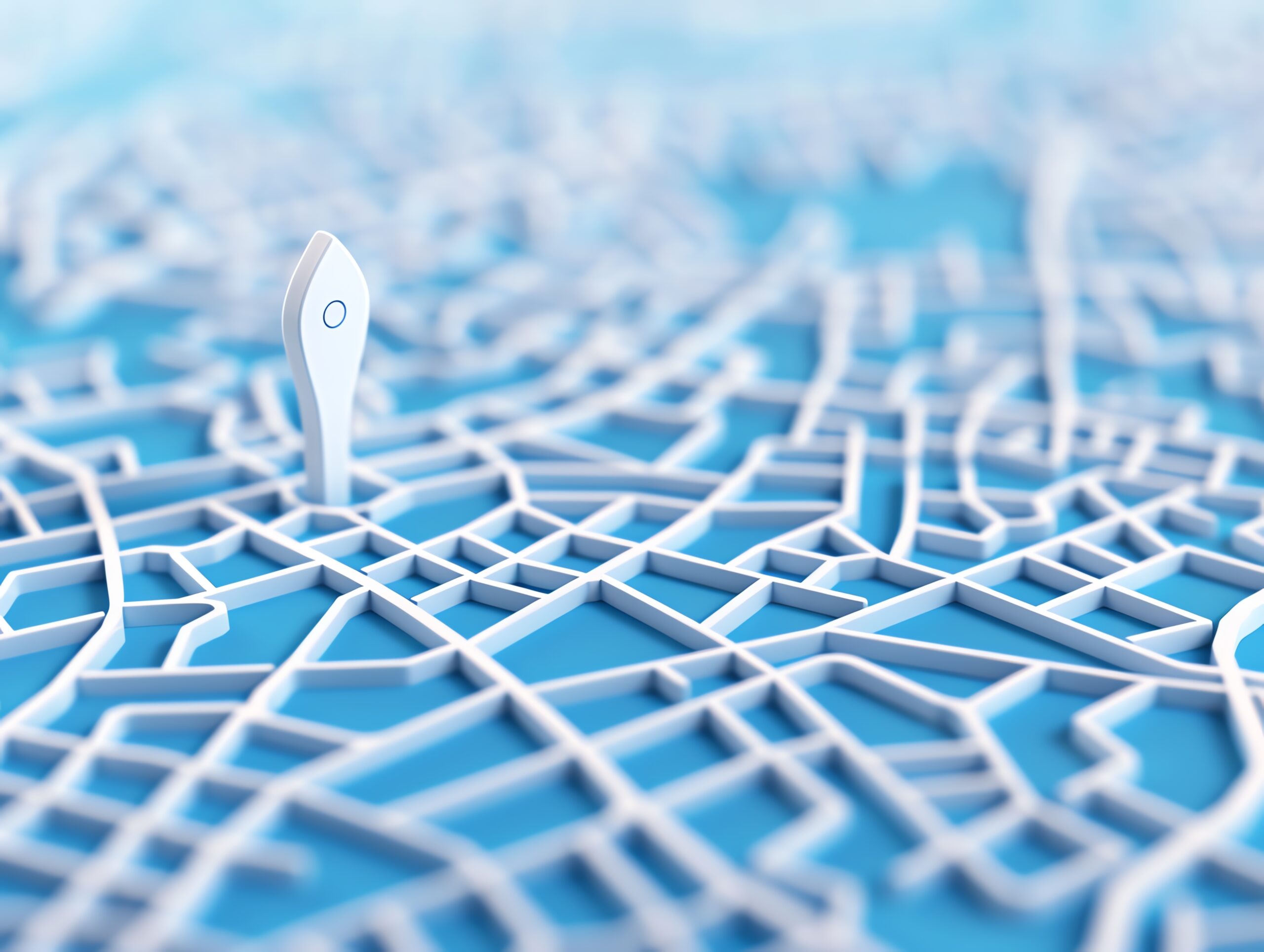Busy commercial spaces like airports, conference centers, and commercial hubs can be challenging to navigate. Wayfinding systems can improve visitor’s ability to safely and comfortably find what they are looking for using maps and directional cues. Intuitive mapping technologies help companies not only design and arrange spaces for effective use, they help reduce friction along travel routes. By providing cues and guidance that optimizes map users’ movement through a space, companies can minimize lines, delays and other negative experiences.
In addition to optimizing user experience and offering navigational tools, wayfinding can fulfill other purposes. Due to its behavior-centered approach, wayfinding can be used to catalyze sustainability. The result is smarter and greener spaces capable of achieving multiple strategic aims at once.
Wayfinding and sustainability synergies
As companies set and pursue strategic sustainability targets, they need to use creative problem solving to identify out-of-the box opportunities to make steady, incremental improvements. While targets and initiatives vary by company, common operational issues include reducing waste, improving energy and water efficiency, and lowering GHG emissions and pollution.
In commercial spaces, baseline operational needs for resources like water and energy depend on various factors, such as building design, management, and usage of the features in the space by visitors.
While visitor counts may vary season to season, behavior plays a critical role in making changes to promote sustainability. By influencing behavior towards more efficient outcomes sustainability becomes not only a resource management issue, but a people management issue.
Wayfinding systems are expert people management tools, as they provide guidance, information and place-based logic to help users interact with spaces. They are provide a helpful interface between the spatial structure and the social interactions within a space. With wayfinding, people can identify efficient routes and participate in helpful behaviors to reduce water and energy consumption, or make smart decisions such as reusing their packaging.
Aligning wayfinding to sustainability goals
Atrius Wayfinder combines features to program maps, plan their features, collect user data, and optimize routes and cues using real-time data. Using the capabilities of Wayfinder, companies can define accessible routes, informational cues, and points of interest in alignment with sustainability goals. The mapping approach may focus on shifting how and when people are able to access certain building features, as well planning ways to help people interact with spaces in a more efficient and sustainability-focused manner. Here are a few examples.
Optimizing routes
People travel through public spaces in different ways: using vehicles, by foot or with the support of escalators and conveyor walkways. The energy and fuel footprint for each mode of movement may vary based on the route they take and the time and distance it take to reach a stopping point. Understanding these movements and the related environmental impact requires an understanding of the energy consuming features along routes, and the fuel or energy required to make a journey. Movement data and predictions can be used to design faster, more energy- and fuel-efficient routes.
Optimizing spaces with data-driven insights
Wayfinding systems collect information that can be critical for sustainability decision-making. Movement data is helpful for identifying which parts of the building are used least, to lower resource allocation to those areas. They can also consider what water-saving and energy-saving measures be improved, based on foot fall.
Lighting, temperature control, escalators and elevators can be scheduled and automated for optimal use based on crowd movements. IoT control devices can help building operators slow, dim, turn down or shut off energy-consuming equipment and fixtures based on route intelligence gathered through wayfinding systems.
The variable, flexible use of energy-consuming resources is key to energy efficiency. It minimizes the the need to leave resources fully powered on. Route intelligence also helps to identify where to replace high-consuming technologies with energy efficient alternatives, such as LEDs for lighting or reduce the number of lights installed, based on low traffic. Analyzing wayfinding data from a sustainability perspective can lead to greater cost savings and resource efficiency along routes.
Ways to influence behavior with wayfinding
Social interactions and movements are at the heart of a wayfinding strategy. Atrius Wayfinding systems support map creation and cartography services, map programming and updates, and information resources available in the maps.
Key locations in public spaces may be highlighted for their sustainability importance or indicated when users enter geofenced locations. Maps can provide users information that helps them improve their sustainable behaviors. Examples include:
- Providing information about proper sorting at the waste bins
- Highlighting water stations for refillable bottles, EV charging stations and other resources to support sustainability
- Adding points of interest that inform people about the sustainable practices or materials used within a space
- Encouraging people to visit shops or restaurants that offer local, eco-friendly products and healthy, local food

Digital maps and waste reduction
By implementing a wayfinding system with an infinitely reprogrammable template, wayfinding systems minimize the need for physical maps that create waste. This also supports greater flexibility for users, who can access the map at touchscreens located in the building or directly from their own personal devices.
Improving sustainability management depends not only on the equipment in use but the ability to interpret data in a meaningful way. Wayfinding systems provide ways to optimize appropriate messaging to users, collect meaningful insights about behavior and ultimately shave off unnecessary consumption in spaces. The result will be a seamless experience for users and a smart, efficient approach to achieving that experience through sustainable facilities and building management. Embrace smart wayfinding systems as a cornerstone of sustainable innovation and inspire eco-conscious practices in every step of the journey.



